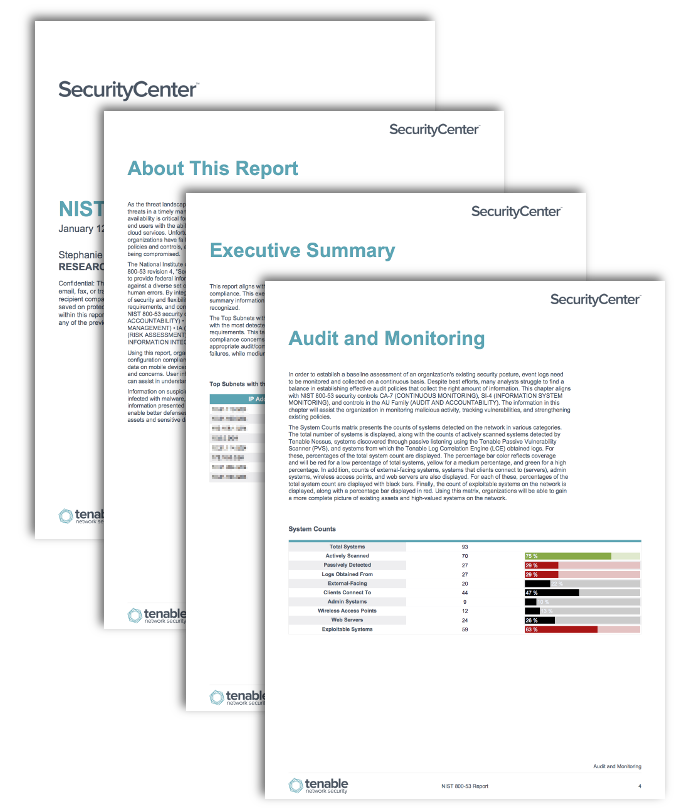by Stephanie Dunn
February 2, 2017

As the threat landscapes continue to evolve, many organizations struggle to adapt and respond to these threats in a timely manner. Increased demands to support workforce mobility and ensuring system availability is critical for an organization’s long term survival. Supporting these requirements have provided end users with the ability to remotely access corporate data, use of portable devices, and access to cloud services. Unfortunately, these changes have also introduced additional security risks that many organizations have failed to properly account for. Failing to monitor changes in network assets, security policies and controls, and user account privileges will lead to an increase risk of critical systems and data being compromised.
The National Institute of Standards and Technology (NIST) developed the NIST Special Publication (SP) 800-53 revision 4, “Security and Privacy Controls for Federal Information Systems and Organizations” to provide federal information systems and organizations with security controls and processes to protect against a diverse set of threats including hostile cyber attacks, natural disasters, structural failures, and human errors. By integrating these controls, organizations will be able to achieve a more consistent level of security and flexibility that can be customized for use with specific industries, standards, and business requirements, and complement other established information security standards. This report aligns with NIST 800-53 security controls in the following families:
- AC (ACCESS CONTROL)
- AU (AUDIT AND ACCOUNTABILITY)
- CA (SECURITY ASSESSMENT AND AUTHORIZATION)
- CM (CONFIGURATION MANAGEMENT)
- IA (IDENTIFICATION AND AUTHENTICATION)
- MP (MEDIA PROTECTION)
- RA (RISK ASSESSMENT)
- SC (SYSTEM AND COMMUNICATION PROTECTION)
- SI (SYSTEM AND INFORMATION INTEGRITY)
Using this report, organizations can better monitor inventory, manage vulnerabilities, and assess configuration compliance, both overall and in specific areas. Because of the increasingly mobile workforce, data on mobile devices and removable media is presented, as well as wireless and remote access activity and concerns. User information, such as users in administrative groups or performing administrative actions, can assist in understanding and controlling user access.
Information on suspicious activity, such as hosts communicating with known bad IP addresses and hosts infected with malware, assists in identifying potential network compromises. An organization can use the information presented in this report to better secure and monitor the network. These improvements will enable better defenses against attacks and responses to malicious activity, and ultimately safeguard critical assets and sensitive data.
This report is available in the Tenable.sc Feed, a comprehensive collection of dashboards, reports, Assurance Report Cards, and assets. The report can be easily located in the Tenable.sc Feed under the category Compliance & Configuration Assessment. The dashboard requirements are:
- SecurityCenter 5.4.2
- Nessus 8.4.0
- LCE 6.0.0
- NNM 5.8.1
- complianceData
Tenable Tenable.sc Continuous View (CV) is the market-defining continuous network monitoring solution, and can assist an organization in knowing, managing, and securing the network. Active scanning periodically examines devices to determine vulnerabilities and compliance concerns. Agent scanning enables detection and scanning of transient devices. Passive listening collects data to continuously detect devices and monitor network connections and activity. Host data and data from other security investments is collected and analyzed to monitor activity, identify new assets, and detect anomalies and malicious behavior. Tenable.sc CV provides an organization with the most comprehensive view of the network, and the intelligence needed to safeguard critical assets and sensitive data.
The following chapters are included in this report:
- Executive Summary: This chapter gives a brief overview of the compliance, vulnerability, and malware detection information presented in the rest of the report.
- Audit and Monitoring: The information in this chapter will assist the organization in monitoring malicious activity, tracking vulnerabilities, and strengthening existing policies. This chapter aligns with NIST 800-53 security controls CA-7 (CONTINUOUS MONITORING), SI-4 (INFORMATION SYSTEM MONITORING), and controls in the AU Family (AUDIT AND ACCOUNTABILITY).
- Authentication and Access Control: The information in this chapter will assist the organization in securing and monitoring information system access, and enforcing strong authentication. This chapter aligns with NIST 800-53 security controls in the AC Family (ACCESS CONTROL), including AC-2 (ACCOUNT MANAGEMENT) and AC-6 (LEAST PRIVILEGE), and controls in the IA Family (IDENTIFICATION AND AUTHENTICATION).
- Configuration Management: The information in this chapter will assist the organization in maintaining inventories, hardening systems, and verifying that security policies are being enforced. This chapter aligns with NIST 800-53 security controls in the CM Family (CONFIGURATION MANAGEMENT), particularly emphasizing CM-3 (CONFIGURATION CHANGE CONTROL), CM-7 (LEAST FUNCTIONALITY), and CM-8 (INFORMATION SYSTEM COMPONENT INVENTORY).
- Data Protection: The information in this chapter will assist an organization in discovering systems with sensitive data, identifying data protection vulnerabilities and compliance concerns, and monitoring for data leakage. This chapter aligns with the NIST 800-53 security controls SC-7 (BOUNDARY PROTECTION), SC-8 (TRANSMISSION CONFIDENTIALITY AND INTEGRITY), SC-13 (CRYPTOGRAPHIC PROTECTION), SC-28 (PROTECTION OF INFORMATION AT REST), and controls in the MP Family (MEDIA PROTECTION).
- Vulnerability Management: The information in this chapter will assist an organization in identifying vulnerabilities, prioritizing remediations, and tracking remediation progress. This chapter aligns with the NIST 800-53 security controls RA-3 (RISK ASSESSMENT), RA-5 (VULNERABILITY SCANNING), and SI-2 (FLAW REMEDIATION).
- Workforce Mobility: The information in this chapter will assist an organization in managing mobile devices, tracking portable device usage, and monitoring usage of cloud-based services. This chapter aligns with the NIST 800-53 security controls AC-17 (REMOTE ACCESS), AC-18 (WIRELESS ACCESS), AC-19 (ACCESS CONTROL FOR MOBILE DEVICES), and AC-20 (USE OF EXTERNAL INFORMATION SYSTEMS).